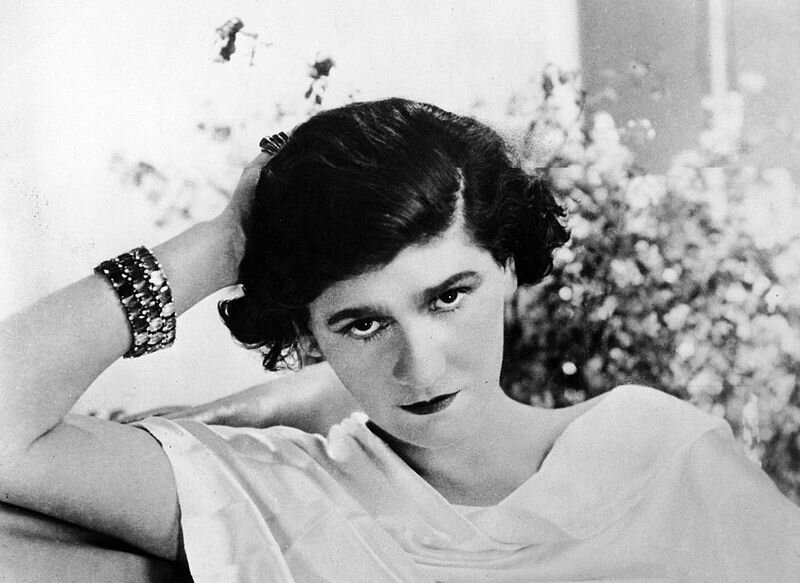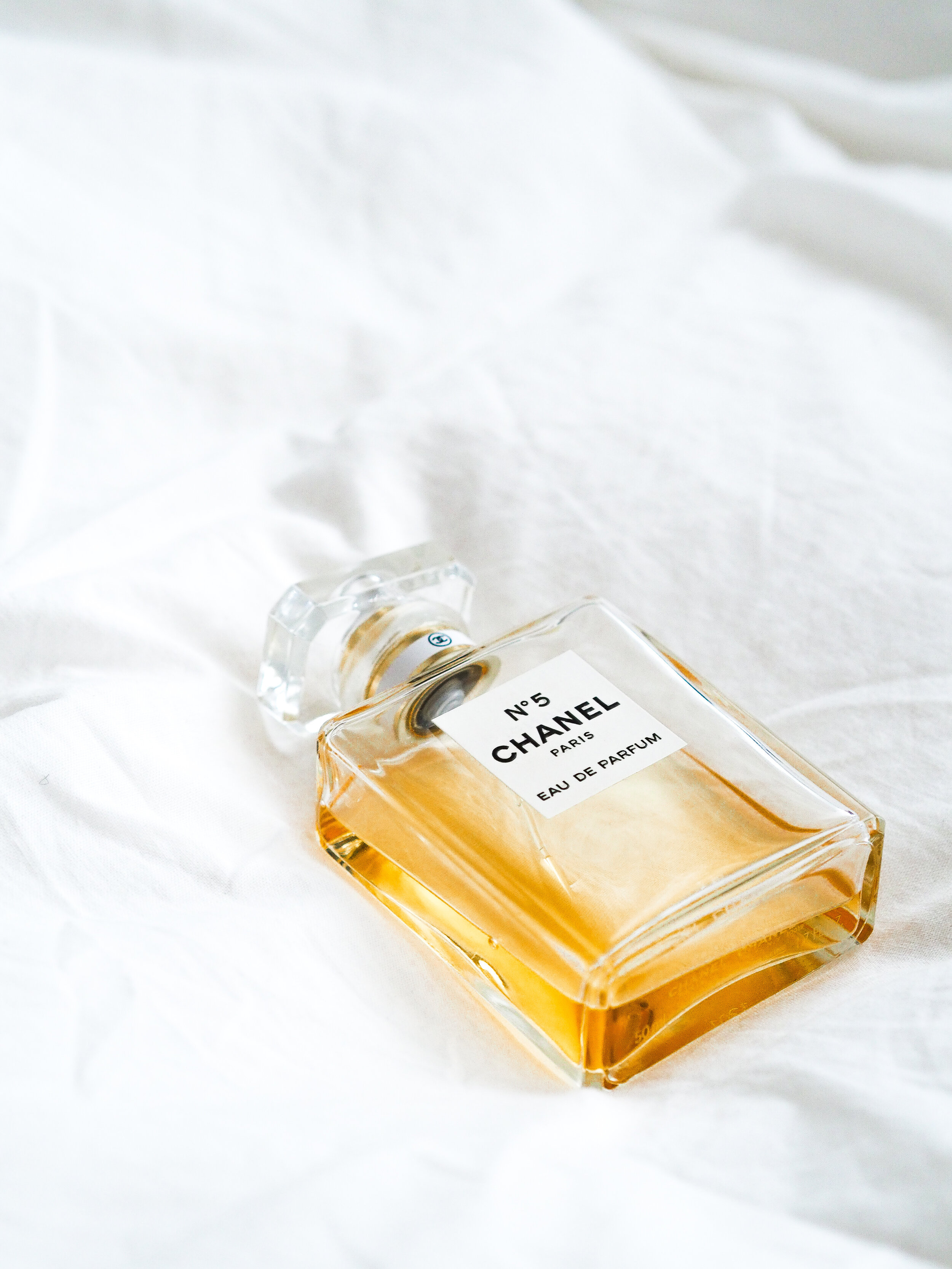The History of Chanel
Chanel, the high-end fashion brand adored by many for years for its classic silhouettes, beautiful fragrances and timeless accessories. Originated by Coco Chanel in 1909, Chanel has had a fascinating history, marred by world wars and Coco’s unfortunate connections to the Nazi intelligence services - yikes. So, let’s take a look at Coco and the world-famous brand she created.
By Time / Getty - Hal Vaughan.
Gabrielle Bonheur (Coco) Chanel was born in France on the 19th August 1883, and her childhood was difficult. Her parents were poor and often absent, with her mother dying when she was 11 and her father sending her and her sisters to live in an orphanage connected to a convent. The convent ran a simple, frugal life with strict discipline. In her later years, Chanel would go on to say that when her mother died she went and lived with two aunts - perhaps she was embarrassed by her early years or perhaps deeply traumatised. At the orphanage, she was taught how to sew, a skill that would bring her great fortune in life. In 1909 Chanel opened a millinery shop on the ground floor of the Paris flat of socialite and businessmen Etienne Balsan. She was his mistress. Chanel got to know his other mistresses who were often women of fashion who enjoyed displaying their wealth, and she used this to her advantage, selling to these women. In 1921 the iconic Chanel No.5 perfume was born when Chanel commissioned the perfumer Ernest Beaux to create fragrances to work alongside her clothing. The 1920s saw the emergence of ‘boyish’ silhouettes in fashion and Chanel helped make the flat-chested fashions popular. In her couture lines, Chanel used colours that tended to be associated with masculinity to create a sense of feminine strength and boldness. The brand continued to grow throughout the 20s and early 30s.
Chanel with Winston Churchill 1921
When the Second World War began, rumours began to swirl about Chanel’s actions during the Nazi occupation of France, and she was rightly criticised for being a little too close to Nazi occupiers. She was known to have liaisons with the German diplomat, Baron Hans Günther von Dincklage, and when, after the war, she was interrogated about this relationship she was acquitted of being a collaborator due to intervention by Churchill. A 2011 book by Hal Vaughan revealed via declassified documents, that she had collaborated directly with the Nazi intelligence service. It also revealed one plan, for late 1943, for Chanel to carry an SS peace overture to Winston Churchill to end the war - however, this clearly didn’t end up happening. After spending several years in Switzerland after the war, she returned to Paris and brought her fashion house back to life.
The 1954 Chanel jacket was presented on a model during the 1957 Spring/Summer show. (Getty Images)
When Chanel revived her fashion house the boyish styles of the 20s were long gone and the ‘New Look’ was taking the world by storm. Created in 1947 by Christian Dior, the New Look was a far cry from war era fashions, featuring nipped in wasp waists, full skirts and a plentiful breast. Chanel began to incorporate ideas of the ‘New Look’ into her designs and in 1953 she collaborated with jeweller Robert Goossens to design jewellery to compliment the brand. The classic pearls of Chanel were born, a feminine way to soften the often severe design of Chanel’s famous wool suits, made famous by the likes of Jacquie Kennedy. The House of Chanel also began selling leather handbags, often featuring gold or metal chains which would go on to become a staple piece of the Chanel fashion house.
When Coco died in 1971 aged 87, she was still designing. She was always dedicated and devoted to her fashion house. After her death, the company was led by Yvonne Dudel, Jean Cazubon and Philippe Guiborgé. After not too long, Jacques Wertheimer bought the interest of the House of Chanel, but he never really took much interest in the brand itself. He cared more about the money than actual fashion. In 1974 his son Alain Wertheimer took control of Chanel and he did an excellent job of reviving the brand. In 1978 he led the first non-couture launch of Chanel and worldwide distribution of the brand's accessories and ready-to-wear began. Alain was smart, however, as he realised that due to increased distribution, sales were actually dropping because the brand was becoming less exclusive. Chanel No.5 was struggling particularly, so he reduced the number of outlets selling the perfume and removed it from drugstore shelves. Investing millions of dollars into advertisement and endorsement of Chanel products by celebrities increased demands tenfold and the love of Chanel No.5 has never dwindled since.
Karl Lagerfeld, 2007. credit :Georges Biard
In 1983 Karl Lagerfeld took over as chief designer for Chanel, and his leadership and designs would propel the brand into the future, creating a modern brand for a modern audience. By incorporating signature Chanel fabrics and detailing like tweed, gold and chains, Lagerfeld maintained the appeal of Chanel that so many had grown to love. He knew the power in Chanel’s classic and timeless styles and never strayed too far from what was expected from Chanel as a brand. Jean Hoehn, a marketer for Chanel, once said of the fashion houses agenda, “We introduce a new fragrance every 10 years, not every three minutes like many competitors. We don’t confuse the consumer. With Chanel, people know what to expect. And they keep coming back to us, at all ages, as they enter and leave the market.” In December of 2018, Chanel announced that it would ban fur and exotic skins from its collections, a decision that many have praised and hopefully more designer brands will follow suit. Lagerfeld died, aged 85, in February 2019. The current creative director is Virgine Viard, who had worked with Lagerfeld at Chanel for over 30 years.
Chanel Fashion House has always been a classic staple in high-end fashion, from its grassroots with the leadership of Coco right through to 2020, Chanel is reliable and recognisable. The eyes are now firmly focused on the future of this enduring brand, and where Viard will take it.




